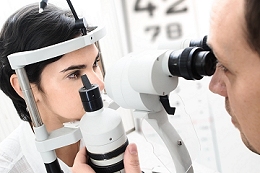Cost Basis

In general, prevention programs aimed at improving eye care for diabetic persons not only result in substantial federal budgetary savings but are highly cost-effective health investments for society.
- Screening and treatment for eye disease in patients with type II diabetes generates an annual savings of $472.1* million to the federal budget and 94,304 person-years of sight, if all patients with type II diabetes receive recommended care. Enrolling each additional person with type II diabetes into currently recommended ophthalmological care results in an average net savings of $975/person*, even if all costs of care are borne by the federal government. The savings is even higher for type I diabetes. Ophthalmologic screening for diabetic persons is more cost-effective than many routinely provided health interventions.
- Screening and treatment of eye disease in patientswith diabetes costs $3190 per quality-adjusted life-year (QALY) saved. Because diabetic eye disease is the leading cause of new cases of blindness among working-ageAmericans, these results support the widespread use of screening and treatment for diabetic eye disease. These cost savings and value-based considerations are based on conventional face-to-face eye examinations. Performing telemedicine examinations using the Joslin Vision Network provides additional advantage. Using IHS specific costs and epidemiologic data, the JVN was shown to be less costly and more effective than a conventional eye examination for detecting DR and preventing vision loss.
- Specifically, $840,000** would be saved annually to detect high risk DR. In addition to the immediate cost efficiencies is the indirect savings from cost avoidance associated with decreasing the need for additional surgery for complications resulting from delayed identification of patients with high risk DR, approximately $1,090,000** annually. Another indirect savings arises from avoiding the increased costs of managing the comorbidities of diabetes in a patient with avoidable vision loss due to the late treatment of DR.
**2013 figures adjusted for inflation since 2002
* Discounted 5% and not adjusted for inflation occurring since 1994
Javitt JC, Aiello LP, Chiang YP, Ferris FL, Greenfield S. Preventive eye care is cost-saving to people with diabetes: implications for health care reform. Diabetes Care. 1994;17:909-917. Preventive Eye Care in People With Diabetes Is Cost-Saving to the Federal Government: Implications for health-care reform
Javitt JC, Aiello LP. Cost-effectiveness of detecting and treating diabetic retinopathy. Ann Intern Med1996;124:164–169 Cost-Effectiveness of Detecting and Treating Diabetic Retinopathy
Whited JD, Datta SK, Aiello LM, Aiello LP, Cavallerano JD, Conlin PR, Horton MB, Vigersky RA, Poropatich RK, Challa P, Darkins AW, Bursell SE. A modeled economic analysis of a digital teleophthalmology system as used by three federal healthcare agencies for detecting proliferative diabetic retinopathy. Telemedicine and e-Health 2005;11:641-651. A modeled economic analysis of a digital tele-ophthalmology system as used by three federal health care agencies for detecting proliferative diabetic retinopathy.


